How to Use this Top 10 Guide
This DK Top 10 guide is one of a new generation of illustrated travel-guide eBooks that guarantees you make the most of your visit before, during and after your stay. Use this eBook both to plan your trip and explore your destination when visiting. So, before you depart, browse the citys highlights, check out the themed sightseeing lists or simply tap through the guide and be inspired.
The best way to explore this guide is to begin at the main table of contents. The first section of the eBook shows you, quite simply, the best sights in the destination. This is followed by: Top 10 of Everything themed Top 10 lists that allow you to make the most of your time away; Around the Destination must-see sights, area by area; Streetsmart essential practical information; and the General Index (a great alternative to Search when you need to quickly look up a keyword or specific sight).
Shorter contents lists appear at the start of every section in the guide, and are designed to make chapter navigation quick and easy. You can jump back to these by clicking on the chapter-heading links that sit with an arrow icon at the top of every article.
There are dozens of useful, easy-to-use maps at the back of this eBook. Select the "View map" links thoughout the guide to see larger-scale versions fill your screen.
As you use this guide, create a personalized itinerary by bookmarking the sights, venues and activities that are of most interest, giving you the quickest possible access to everything youll need for your time away.
Price guide
All price ranges quoted for hotels in this guide are based on a standard, double room per night (with breakfast if included), taxes and extra charges. Similarly, all price ranges quoted for restaurants are based on a three course meal for one with half a bottle of wine (or equivalent meal), taxes and extra charges.

Normandy Highlights
Normandy brings a dozen different images to mind: William the Conqueror, the D-Day landings, Mont-St-Michel; the bleak landscape of the Cotentin coast, the sparkling summertime playground of the Cte Fleurie; sumptuous chteaux, historic abbeys, famous gardens; the orchards of the Auge, the picture-postcard scenery of the Suisse Normande; Monets home at Giverny, the Cabourg immortalized by Proust or perhaps its cider, calvados and camembert. Whatever your list, it will barely scratch the surface of this rich and rewarding region.

Mont-St-Michel
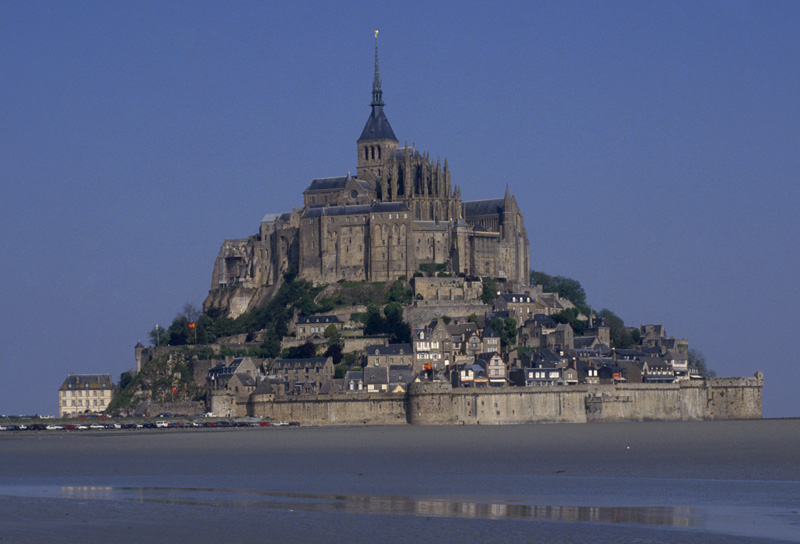
View of Mont-St-Michel
One of the most spectacular sights in Normandy, this craggy rock crowned by a magnificent abbey appears to erupt from the surrounding landscape a broad expanse of sand or sea, depending on the dramatic tides. The regions star attraction since pilgrims first flocked here 1,000 years ago, it now draws some three million visitors each year and has perhaps 50 true inhabitants.
 Abbey
AbbeyThis splendid building is a pleasing jumble of architectural styles. Its jewel is the Merveille, built during the abbeys heyday and incorporating cloisters, knights hall, refectory and guests room.
 Ramparts
RampartsPunctuated by imposing towers, the longest section was built to repel the English during the Hundred Years War. The abbots soldiers lodged in the Tour de lArcade.
 Grande Rue
Grande RueThrough the fortified Porte du Roy, its portcullis still visible, the Grande Rue winds steeply uphill. Pretty and cobbled, it was the 12th-century pilgrims way, and remains a route to the top though now you have to run a gauntlet of souvenir shops and overpriced restaurants.
 Muse Historique
Muse HistoriqueHighlights are the garden periscope, 14th-century monks bath, 17th-century riding boots, and recreation of the prisons.
 Logis Tiphaine
Logis TiphaineChief of the kings armies Bertrand du Guesclin built this house in 1365 for his wife, Tiphaine a safe haven while he was away at war.
 Archoscope
ArchoscopeA large model of the Mont rises from a huge tank of water in a spectacle of sound and light, with a historical commentary in English.
 glise St-Pierre
glise St-PierreThe most interesting feature of the parish church, begun in the 11th century but not completed until the 17th, is the apse that straddles a narrow street. Its treasures include a silver statue of St Michael.
 Chapelle St-Aubert
Chapelle St-AubertLegend tells of a huge rock blocking the entrance to a cave where the abbey now stands. Nobody could move it until a small boy miraculously pushed it into the sea with his foot. This tiny 15th-century chapel was built on the site where the rock was supposed to have landed.
 Scriptorial dAvranches
Scriptorial dAvranchesFilms and games lead visitors through a celebration of the written word, from beautifully illuminated medieval manuscripts to modern e-books.
 Ecomuse de la Baie du Mont Saint-Michel
Ecomuse de la Baie du Mont Saint-MichelThis child-friendly exploration centre, set in a farm complex on the coast, has models and interactive displays showcasing the environment and wildlife of the bay, along with its history of fishing and salt production.
Tip: Contact Chemins de la Baie (02 33 89 80 88) for a guided bay walk from Gents to Mont-St-Michel.
Tip: Cafs and restaurants line the Grande Rue.
Tides
Mont-St-Michel has the highest tides in continental Europe, with a difference of up to 15 m (49 ft) between low and high water in March and September, when the spring tides occur. When the tide is out, it exposes around 250 sq km (97 sq miles) of sand. The tide is also unusually strong, running across the flat expanse of sand at a speed of some 10 kph (6 mph). The strongest tides occur two days after a full or new moon, when the sea reaches its highest level at 8 or 9 am and pm.

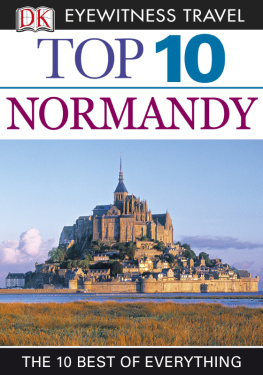
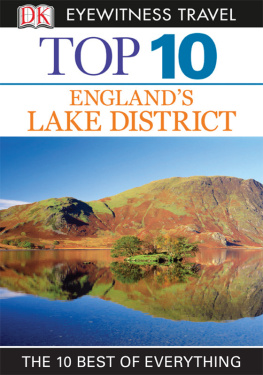

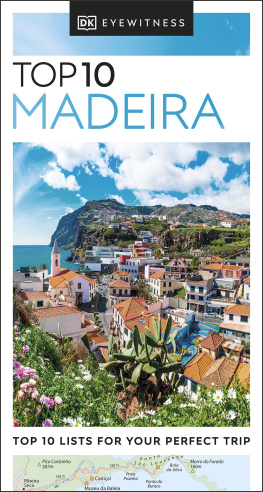

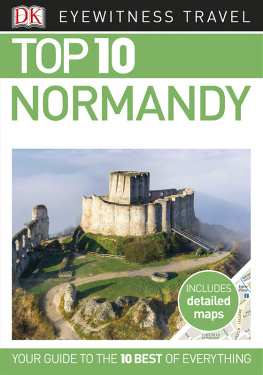
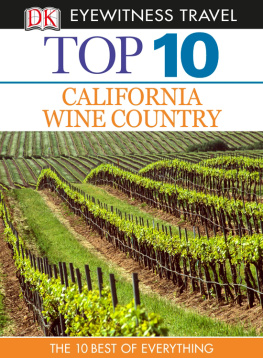






 Normandy Highlights
Normandy Highlights
 Abbey
Abbey Ramparts
Ramparts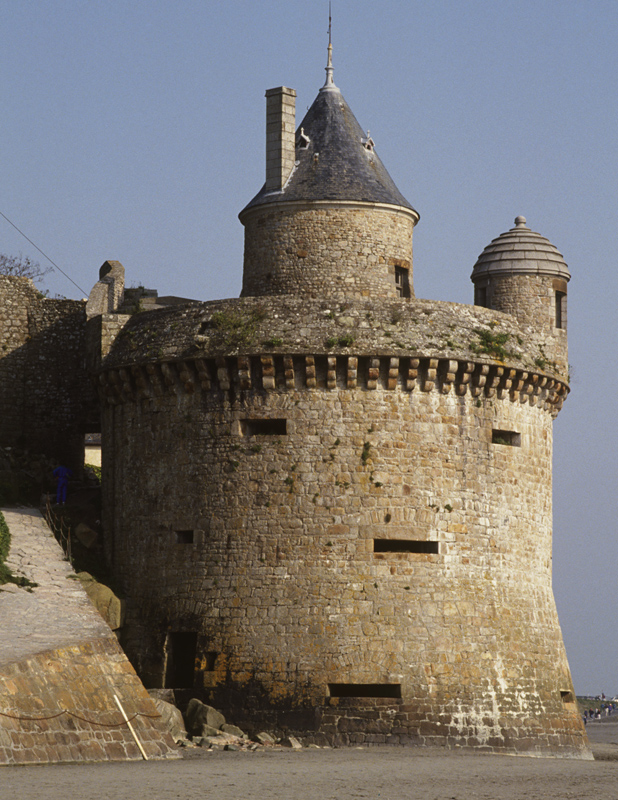
 Grande Rue
Grande Rue Muse Historique
Muse Historique Logis Tiphaine
Logis Tiphaine Archoscope
Archoscope glise St-Pierre
glise St-Pierre Chapelle St-Aubert
Chapelle St-Aubert Scriptorial dAvranches
Scriptorial dAvranches Ecomuse de la Baie du Mont Saint-Michel
Ecomuse de la Baie du Mont Saint-Michel